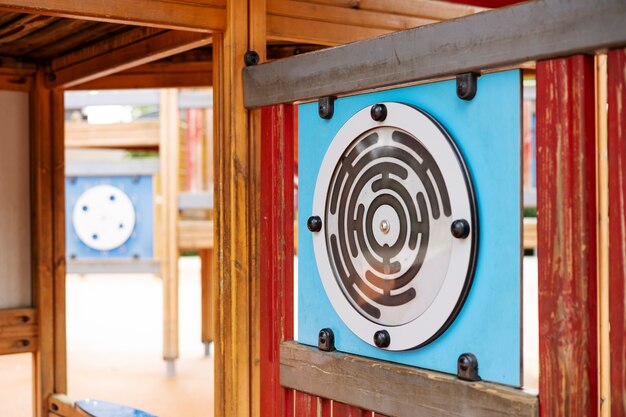The Evolution of Doorknobs From Ancient Mechanisms to Modern Convenience
The Evolution of Doorknobs From Ancient Mechanisms to Modern Convenience: Explore the fascinating history of door-access mechanisms, from primitive latches to sophisticated modern door handles, and discover how they have shaped human civilization.

- Anthony Arphan
- 4 min read

Imagine a world where entrances were secured not by traditional locking mechanisms, but by intricately designed tools that bridged the gap between interior and exterior spaces. These ingenious devices, spanning epochs of human civilization, have evolved significantly to embody both functionality and aesthetic appeal.
Throughout history, these implements have undergone profound transformations, adapting to the cultural and technological landscapes of their times. Initially conceived as rudimentary devices to bar or permit entry, they have metamorphosed into sophisticated instruments, blending ergonomic design with mechanical precision.
From their humble beginnings as simple latches carved from wood or stone, these essential fixtures have traversed epochs and continents, shaping and being shaped by the societies they served. Their development mirrors the evolution of architecture and the human need for security and privacy.
Early Innovations in Door Access

In the early stages of door entry methods, ingenious solutions emerged to facilitate entry and exit from enclosed spaces. These early systems, characterized by their inventive simplicity and functional designs, marked the initial strides towards efficient access management.
Ancient Methods of Entry Control
In ancient times, methods for regulating access to enclosed spaces were markedly different from contemporary solutions aimed at securing entryways. Early civilizations devised intricate systems and devices to manage passage into protected areas. These historical mechanisms, crafted with ingenuity and adapted to cultural norms, reflect a diverse array of inventive approaches to door security.
| Civilization | Method | Description |
|---|---|---|
| Egyptians | Stone Slabs | Large stone slabs pivoted to open or close passages, often adorned with hieroglyphs. |
| Romans | Sliding Bolts | Wooden or metal bolts slid into place across door frames to secure entrances. |
| Chinese | Wooden Latches | Elaborate wooden latches with intricate locking mechanisms, influenced by Taoist principles. |
| Greeks | Guarded Entryways | Guarded entryways with armed sentries and barred gates to control access to city-states. |
This HTML section introduces the topic of ancient methods of entry control, showcasing different civilizations and their innovative approaches to securing doorways.
Early Mechanical Door Latches
In the earliest epochs of human habitation, the methods employed to secure entryways exhibited a rudimentary yet effective ingenuity. Before the ubiquity of contemporary entry handles, mechanisms crafted for door fastening evolved in tandem with architectural advancements, demonstrating a profound innovation in safeguarding access.
Innovative Designs in Early Civilizations
In the dawn of human craftsmanship, early societies ingeniously fashioned door-access mechanisms that deftly melded form with function. These early prototypes of entryway controls exhibited a remarkable ingenuity, showcasing a blend of practicality and aesthetic finesse. Innovators of antiquity crafted rudimentary yet effective means to secure and open portals, employing materials such as rudimentary metals, natural fibers, and carved stone. Their designs reflected a profound understanding of spatial dynamics and the evolving needs of communal living.
- Early civilizations devised methods to fashion intricate latches and fasteners, demonstrating a mastery of early metallurgy.
- Archaeological findings reveal door mechanisms adorned with symbolic motifs, hinting at cultural significance beyond mere utility.
- In Mesopotamia and Egypt, rudimentary locking mechanisms were crafted from locally sourced materials, emphasizing resourcefulness in design.
- The Indus Valley Civilization exhibited early examples of ergonomic handles, enhancing ease of access while maintaining structural integrity.
- Ancient Chinese dynasties showcased door fastenings that integrated harmoniously with architectural motifs, showcasing a reverence for design continuity.
Advancements in Accessibility Technology

In exploring the progression of accessibility enhancements, we delve into the innovations that have broadened door entry solutions. These advancements, tailored to improve usability for diverse needs, signify a pivotal evolution in door access mechanisms. One notable breakthrough involves pioneering mechanisms that facilitate effortless entry, ensuring inclusivity and user-friendly experiences.
Impact of the Industrial Revolution
In the era of industrial transformation, the world witnessed a profound metamorphosis in the fabrication of door-fastening devices. This epoch marked a pivotal shift in craftsmanship techniques, production scalability, and societal needs for door-entry solutions.
The surge in urbanization and mass migration spurred demand for sturdy, efficient door-access mechanisms, catalyzing innovations in lock and latch designs. This period not only accelerated the availability of affordable access solutions but also standardized quality and performance benchmarks.
The Rise of Mass Production
In this segment, we explore the advent of large-scale manufacturing methods that revolutionized the fabrication of door-access mechanisms over time. Initially, these items were painstakingly crafted by skilled artisans, employing traditional techniques passed down through generations. However, with the onset of industrialization, there emerged a paradigm shift towards mechanized processes. This shift enabled the efficient replication of door-opening devices, marking a significant departure from the labor-intensive methods of the past.
- Advancement towards
- Emergence of
- Progression of